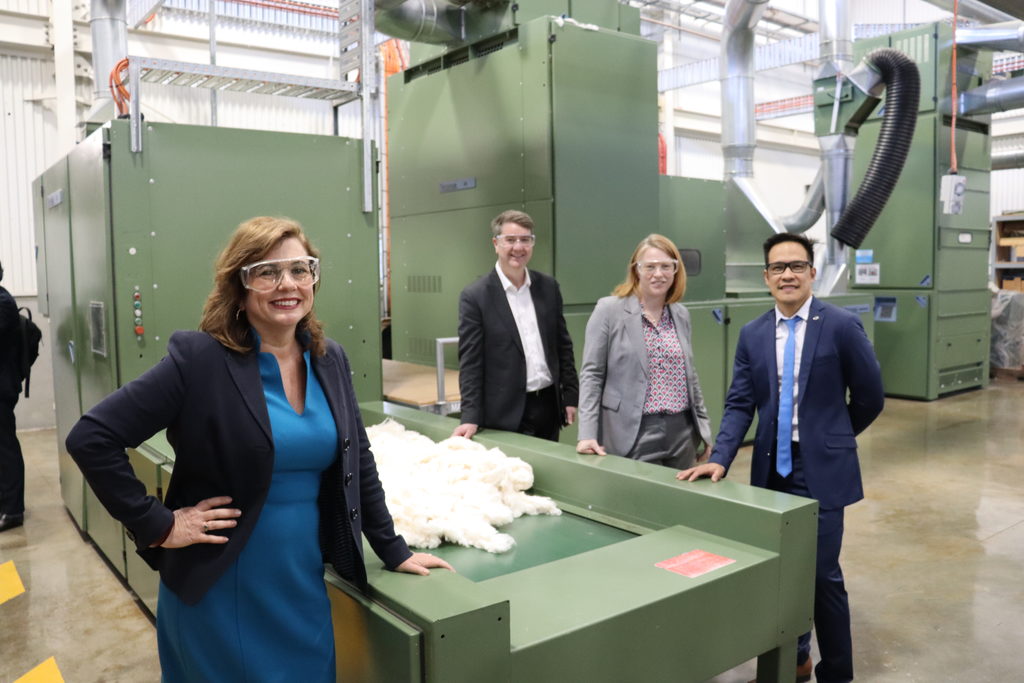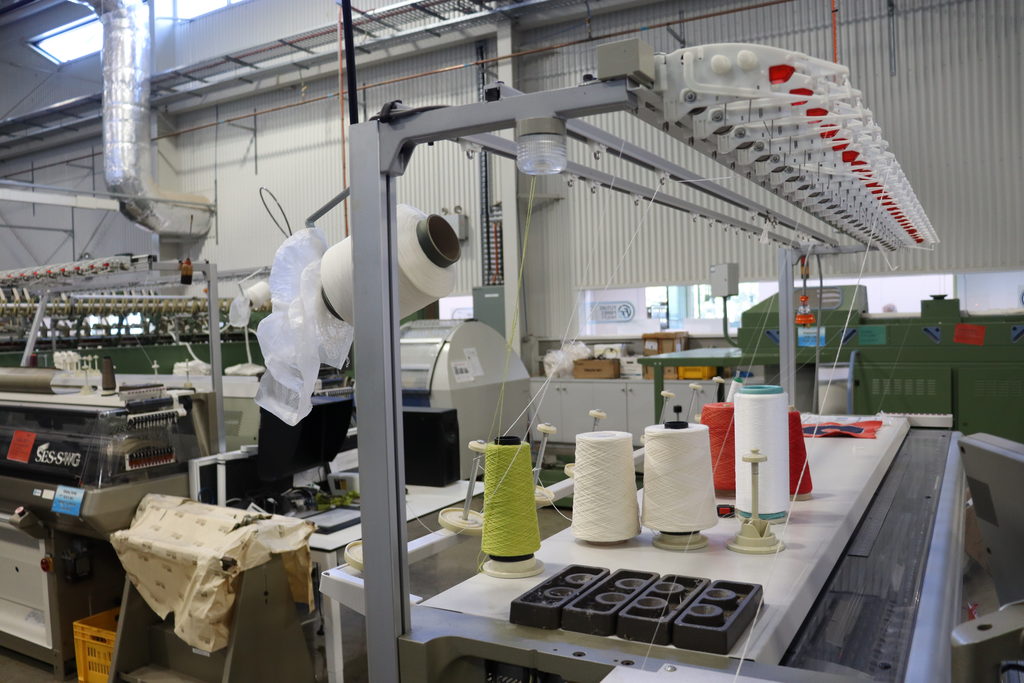WEAVING THE FUTURE: World-class fibres research hub opens

(L-R) Deakin acting deputy vice-chancellor of research Professor Matthew Clarke, Australian Research Council chief executive officer Professor Christina Twomey, Australian National Fabrication Facility chief executive officer Jane Fitzpatrick and ARC Research Hub for Fture Fibres director Professor Joe Razal. Photos: JAMES TAYLOR
THE Southern Hemisphere’s biggest and most sophisticated fibres research group is now up and weaving in Geelong.
The Australian Research Council (ARC) Research Hub for Future Fibres, located in the Future Fibres Facility at Deakin University’s Waurn Ponds campus, is a $5 million, five-year collaboration between ARC, Deakin, CSIRO and university and industry partners, using research teams and facilities at Deakin’s Institute for Frontier Materials.
Deakin has the largest and most advanced fibre research group in the Southern Hemisphere, with more than 110 researchers.
The Future Fibres Facility is unique in Australia, housing fibre production and yarn processing equipment, along with specialised knitting and weaving machines.
Working with industry partner Nanollose, researchers at the hub are helping to develop fabrics generated from waste products, working with Xefco on a water-free method to dye and finish fabrics, and are collaborating with Carbon Revolution to find ways to reduce waste in the manufacturing of carbon fibre composite wheels.

The hub officially opened on Friday last week, with attendees including ARC Research Hub for Future Fibres director Professor Joe Razal, Deakin’s acting deputy vice-chancellor of research Professor Matthew Clarke, Australian Research Council chief executive officer Professor Christina Twomey, and Australian National Fabrication Facility (ANFF) chief executive officer Dr Jane Fitzpatrick.
Professor Razal said the hub would enable research teams to take new ideas from inception through the prototype and production stage, or “from lab to label”.
“It started with just these two words: ‘If only’.
“I thank ANFF for recognising that this Future Fibres Facility that we now have is indeed a unique national capability – one Australia just cannot afford to lose.
“The research focuses on solving real-world problems and discovering ways to reduce waste from the manufacturing process.

“This not only benefits the local community with highly skilled jobs but also enhances our international reputation for innovation in Australia.”
Professor Twomey said the ARC’s five-year grant of $5 million to the Research Hub for Future Fibres was well-deserved, as it was a highly competitive process, and the hub had succceeded because of its focus on sustainability, circular economy and extraordinary capability.
The new Future Fibres Facility is supported by the ANFF, a part of the National Collaborative Research Infrastructure Strategy (NCRIS).
The ARC Research Hub for Future Fibres includes research partners at the National University of Singapore, EMPA (Swiss Federal Labs for Materials Science and Technology), Aalto University (Finland) and Imperial College London.

















